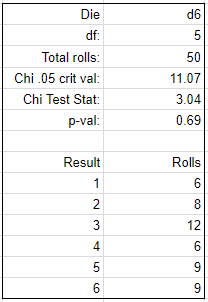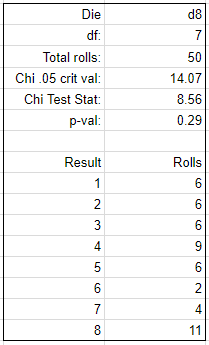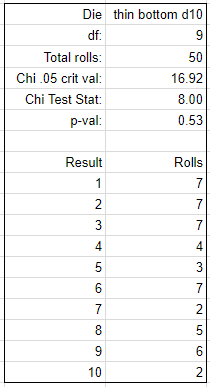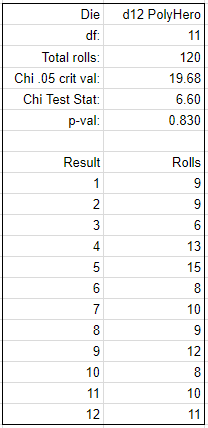 I’m a big fan of dice, especially unusual dice, so back when it was open I backed PolyHero’s wizard dice Kickstarter (Thanks Patreon supporters!). If you’d like to grab your own set, they’re available for purchase at PolyHero’s web site. These are amazing looking dice, and I can see them being a lot of fun to toss around while playing a wizard. I can especially see it being a blast throwing out a handful of the d6 fireball shaped dice to determine your spell damage! I got the Heartwood and Moonsilver set pictured above, but they come in a variety of other colors. As a Kickstarter backer, I also got two d2 spellbook dice as stretch goals, one in Heartwood and one in Electrum. It doesn’t look like these are available for sale at this time, which is a shame because they easily have the most detailed sculpt of the set. From a Kickstarter standpoint, everything was fulfilled quickly and painlessly. I would back the next PolyHero dice Kickstarter.
I’m a big fan of dice, especially unusual dice, so back when it was open I backed PolyHero’s wizard dice Kickstarter (Thanks Patreon supporters!). If you’d like to grab your own set, they’re available for purchase at PolyHero’s web site. These are amazing looking dice, and I can see them being a lot of fun to toss around while playing a wizard. I can especially see it being a blast throwing out a handful of the d6 fireball shaped dice to determine your spell damage! I got the Heartwood and Moonsilver set pictured above, but they come in a variety of other colors. As a Kickstarter backer, I also got two d2 spellbook dice as stretch goals, one in Heartwood and one in Electrum. It doesn’t look like these are available for sale at this time, which is a shame because they easily have the most detailed sculpt of the set. From a Kickstarter standpoint, everything was fulfilled quickly and painlessly. I would back the next PolyHero dice Kickstarter.

I only have two very small complaints about these dice. First, they are large and most are long and thin. This makes getting them rolling in your hand difficult (and I have pretty big hands). You may have to shake them with an open hand or two-handed to get a good “shake feel” out of them, or toss them where they can get a good roll going. Second, the stylized font used on the dice can make them a little harder to read than other dice (6s and 9s are very similar and only the 6s are underlined, fives twos and threes all look pretty similar), and the steep angle of the d10 potion bottles can make them hard to read if they land angled away from you. These are very minor issues though and at most are an argument for ample space to roll and good lighting in your game space, and careful reading until you’re familiar with the font.
As I often do with oddly shaped dice, I ran a set of chi-square goodness of fit tests to see if their shape impacted the distribution of their results at all. For each I used either the minimum rolls required for the chi-square test, or 50 rolls, whichever was larger. As usual, we’re not testing these dice to see if they actually match an ideal uniform distribution (no dice, not even precision milled casino dice do), but rather if they appear to get reasonably close to that distribution within a number of rolls you might expect to see within a session.
The results of the chi-squares were mixed. Most of the dice look good, but my d12 had spectacularly poor results (p-value of .005) and a second test gave better, but not great results. This could have just been two bad tests in a row (it happens) or it could just be my die. (we expect dice within a manufacturing batch to have some variance and my d12 seems to have a slight curve to it that could easily explain the poor results) So, I contacted PolyHero and explained my problem. They got back to me within a day and offered to replace my die, but more importantly, grabbed a dozen of their dice of various colors and rolled them each 10 times for me to give me a data set from a larger sample of dice that could give a more typical result across most dice instead of from a single die. Of course 12 dice rolled 10 times each isn’t exactly comprehensive, but it’s a lot better than a sample from just one. This sample turned out much better, so I see no reason to believe there’s any systematic issue with the dice, and as a bonus I also have solid evidence that PolyHero’s staff are quick to respond when someone has an issue with their product.
Update: head gnome John Arcadian also backed this Kickstarter for two sets of dice (the black and the green) and got his dice just before this article went live and rolled me 60 results from each. One of them passed with better results than any of my previous tests (.957), the other passed, but not by much(.058). I’m willing to call this one “tentatively fine, further study needed” so if anyone out there wants to run a test on their PolyHero Wizard dice, let us know the results!
English summary result: The results looked very good. Most of the dice easily passed a goodness of fit test at any reasonable criteria. While the initial d12 results weren’t promising, the larger sample from the manufacturer was much better.
Stat summary result: p-values for H0: results are from an appropriate uniform distribution vs a .05 critical value ranged from .29 to .83. Only the initial d12 test rejected H0 with a p-value of .005.
Long form results:
- Notation:
- df — degrees of freedom, which particular chi square curve we’re comparing against. Depends on the number of sides the die has.
- Chi .05 crit val — the value, for the particular chi square curve we’re looking at, that separates the rarest 5% of groups of rolls from the rest. If the Chi Test Stat exceeds this value, we say the die is not fair. There are other critical values for other tolerances.
- Chi Test Stat — the value we calculated from our rolls. Compared to the critical value.
- p-val — how common the results we observed were. p-values fall between 1 and 0. Closer to 1 is better. Lower than .1, .05, or .01 are usual ground for declaring a deviation from the ideal standard.
 |
 |
 |
 |
 |
 |
 |
 |
 |
Update:
While we were slaving away over a hot stewpot to bring you this article we asked Dann May, co-designer of the dice to say a few words about PolyHero’s creation and quality testing processes. Since we were running late (short legs you understand) it didn’t get into the article at first, but we’re always game for more info about dice, and we know our readers are too so we updated ASAP:
Our basic approach is:
- We accept these novel designs don’t prioritize precision balance in the way some dice do, but they are designed to be “random,” and we do a lot of work to balance them.
- We design the dice using various lines of symmetry, and we use our 3D modeling software to very precisely position the center of mass, even taking the variation in the numbers into account. For example, the numbers on the D20 Wizard Hats are different sizes to account for the weight of the ink and how that affects the spin.
- We create 3d prints of the dice and simply roll them a lot and track the results, and make adjustments based on the data those rolls give us.
- Where there are balance issues with a die, it will generally be through the manufacturing. We can’t account for each of those on an individual basis unfortunately; the level of quality control required would be almost infinite, rolling every die to test it. What we do is we talk with the manufacturer about how we can prioritize balance in their process overall, whilst meeting our other quality goals. Sometimes there are small trade-offs, such as avoiding bubbles forming in some designs will mean increasing the chance of water marks (thin lines on the surface of the dice), so we will err on the side of balance in those rare cases. We’ve seen a few particularly odd individual dice in sampling that are hard to fathom (for example, they may have banged on the edge of the tub as they are lowered into the water, or taken out of the water too quickly). What we do is keep pushing the manufacturer for more consistency, and then also assure customers that if they get a bad die, we can replace it.
But the thing we always need to make really clear is that all these challenges are specific to creating these novel shapes and designs, there isn’t a 1:1 comparison you can make to a regular polyhedral die. Their platonic geometric nature affords them a very different moulding process and a different finishing process. We do want to capture what we can of the aesthetics of regular dice, and so we use the same acrylic material for the weight and look, and we do design them to be used, not just something to look at. But our customers do need to be comfortable that there is a spectrum of accuracy from precision cut casino dice, down to a slightly cube-shaped rock you find on the beach. And we do everything we can to push towards the top of that spectrum while also pushing the fun and experimental coolness of the designs. So there is a “balance” of expectations there we also need to strike.
-Dann May
Pardon us while we dice-nerd squee over here.

















P.S. People have been asking elsewhere. Size to see if they will go through your tower:
d2s is ~ 1 by 1.375 x .375
d4 is ~ 1.5 x .375 x .375
d6 is ~ 1.5 x .75 x .75
d8 is ~ 1.625 x .25 x .25
d10s are ~ 1.5 x .75 x .75
d12 is ~ 2.125 x .625 x .625
d20 is ~ 1.125 x 1.125 x 1.125
We need to get a set over to these guys to put them through their paces:
https://0au.de/project/electronics/automatic-die-tester/
They’ve built a machine that automatically rolls and records the numbers for as long as you want.
I’m looking forward to seeing my dice, when they finally arrive. They instructed the distributor to fill orders based on who paid the least first, meaning that the biggest backers end up receiving their dice last. The distributor, apparently contrary to instruction from the creators, also sent out a lot (all?) retailer orders before all backer orders had been sent (let alone received).